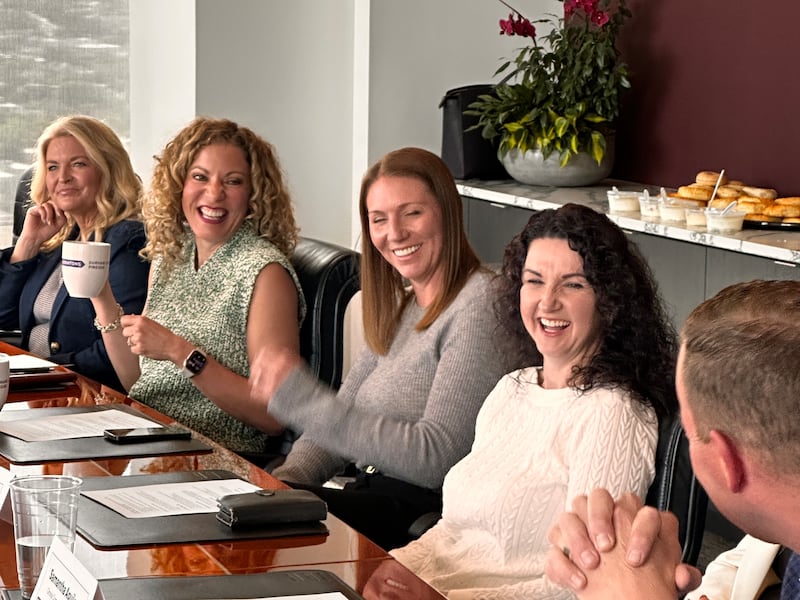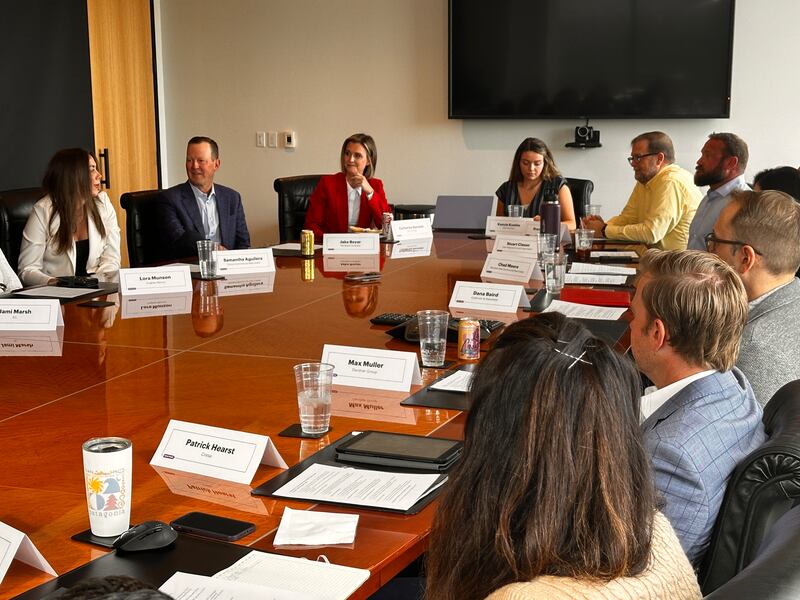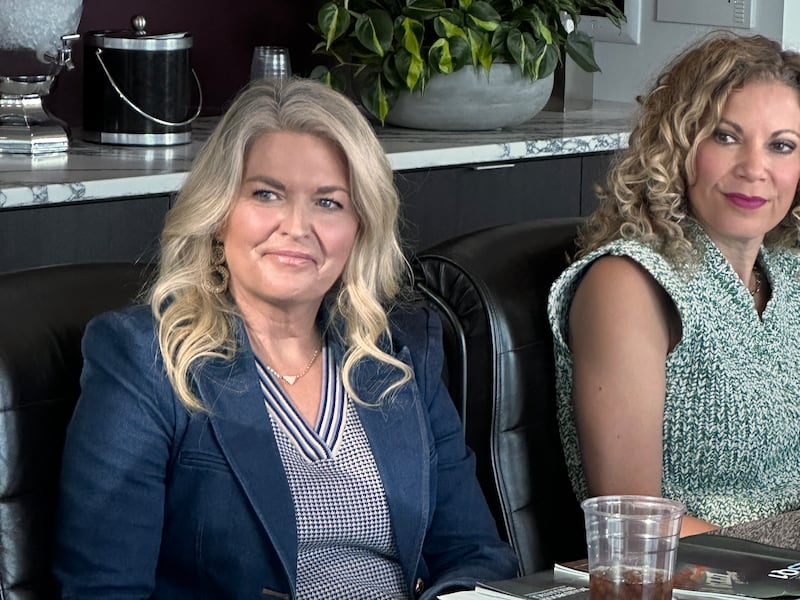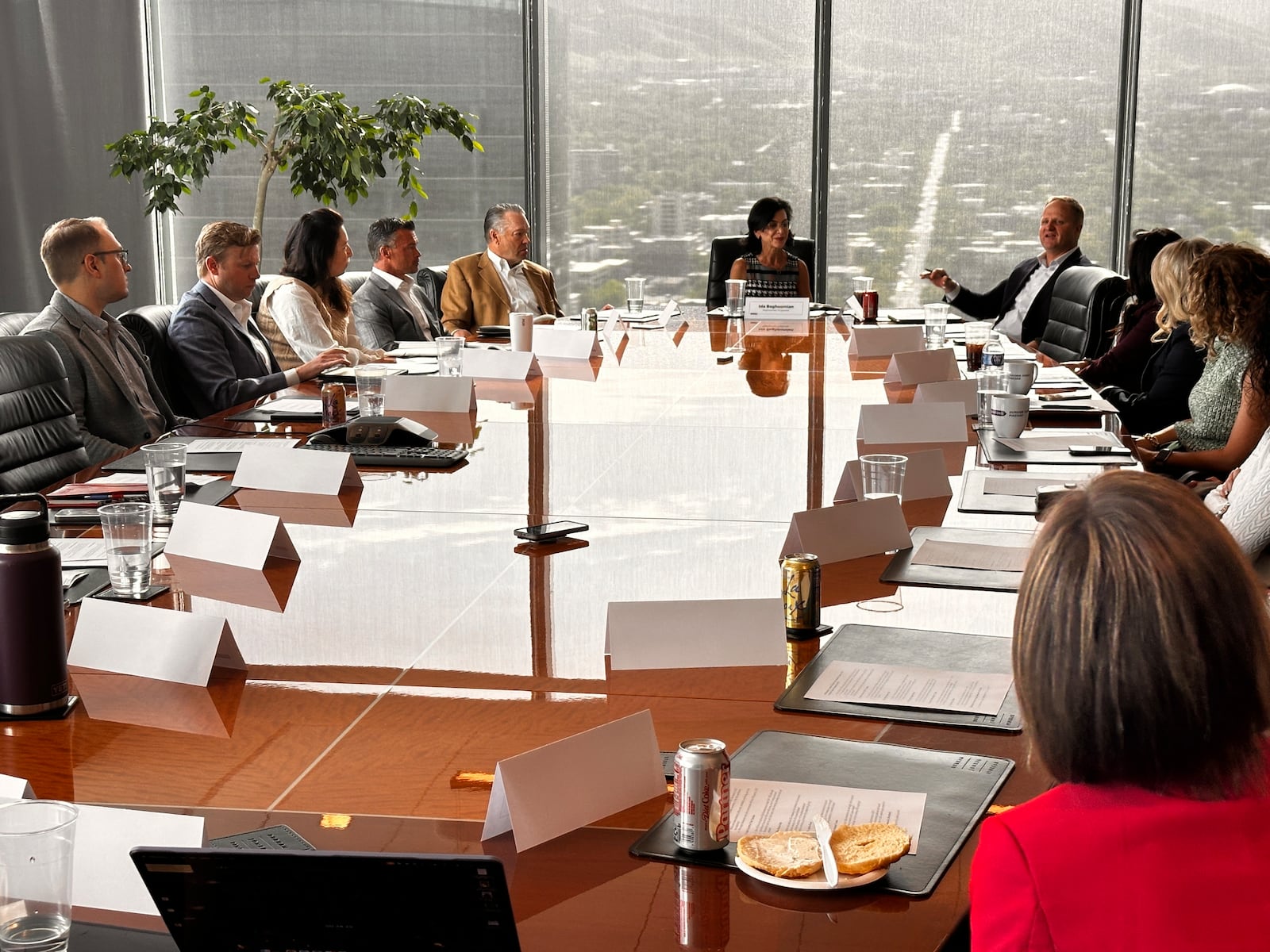This story appears in the June 2025 issue of Utah Business. Subscribe.
Last month, Utah Business partnered with Dentons Durham Jones Pinegar to host a roundtable on the current state of Utah’s commercial real estate market. This conversation was moderated by Ida Baghoomian, commercial property manager of Baghoomian Properties.
Do you feel that Utah’s commercial real estate market is in a different place than the rest of the nation? Have you seen an uptick in activity over the last couple of years?
Lora Munson | Managing Director, Commercial Real Estate | Hughes Marino
There has been an uptick in activity, but it feels like it started happening in the fourth quarter of last year and has progressed through 2025. When I say normal, I’m talking about COVID-19 normal, where activity was almost non-existent and there was a ton of sublease space that had flooded the market. There’s still a lot more ground that we need to make up before developers can start building new product again. It feels like it’s going to be a while.
Bryce Blanchard | Executive Managing Director, Capital Markets | Newmark
In 2022, there were virtually zero office sales. Then all of a sudden, the office market started to get interesting. … This is the biggest reset in values of any asset class in the history of Utah. Some of it is execution, some of it is timing. A big part of it is the location, amenity package and cash flow runway. Not only do we have no new supply, we actually have negative supply.

What’s happening with amenity-rich trends and co-working demand?
Dana Baird | Executive Managing Director | Cushman & Wakefield
Anything you can do to provide hospitality for the tenants who are working in the buildings is going to be your best job. Taking out all the granite in the lobby, redoing it; the fitness facility that was in the basement is being moved to the second floor in a really nice, naturally lit place; new training area, conference rooms, a lounge, pickleball courts — those are what get people excited and you can push rates in those buildings.
Jami Marsh | EVP | JLL
We’re having conversations with tenants … about what’s really going to appeal to the most people to get them back to the office. We’re hearing a lot of chatter around F1 simulators or golf simulators, but does that really draw an appeal to every employee? In bigger markets, we’re seeing things like wellness pods, … pop-up health clinics, daycares or dry cleaning. Those thoughtful approaches are how we are going to get the most people back to the office. It’s not necessarily the golf simulators.
Patrick Hearst | Senior Advisor, Tenant Representation | Cresa
Amenities within the buildings are nice. If one space is even with the other, it can sway the needle that way. But from my tenants’ perspective, location and the amenities that surround the building are more important than the amenities within the building. I’ve had clients turn away from gorgeous buildings because they like the building with better restaurants, better parking, better things to do, better employee access and lower commute times. … The one question we always get is what’s parking like? … The new thing is, “How many EV spots can we get?”
Utah has been booming thanks to logistics, industrial and more. Do you feel that we’re still in expansion mode or are we nearing oversupply?
Jake Boyer | CEO | The Boyer Company
We built 2 million square feet of spec industrial space last year. We were really nervous because there was a sense that things were slowing down [in the market]. Luckily, during the course of last year, we leased 1.75 million of the 2 million. … I believe that we are a little bit more stalled out. There’s still activity, but it’ll be interesting to see how the tariffs play into that stallout; maybe we’re done with the tariff problem. It kind of depends on the day-to-day. I know from our perspective as a company, we have really pulled back the aggressiveness on the development of new industrial [products].

Lora Munson | Managing Director, Commercial Real Estate | Hughes Marino
I think there’s a big difference between the Salt Lake County and the Utah County industrial markets. For example, we’re working with a 140,000 square foot industrial user that is in Utah County, and their landlord just gave them a proposal to renew that lease at essentially a dollar a square foot per month. But, they can get a very similar building in Salt Lake County for 70 cents a square foot. … Because the pricing in Utah County has gone up so high, this tenant is saying, “Do we even have to stay in Utah? What if we had an east coast distribution center?”
Construction costs, supply chain issues and AI are all shaping investment and development today. What’s changing the most right now?
Nadia Letey | SVP, Office Division | CBRE
There’s really not a lot of office that’s selling … You have a disconnect where tenants think they should be getting a fire sale in some properties, but the owners can’t provide that because the lender’s hands are tied. … Our jobs have been to educate both sides and to tell people that you can’t anticipate getting this phenomenal, low lease rate.
Chad Moore | Chairman | Mountain West Commercial Real Estate
Coming out of the 2008 crisis, you couldn’t get a lender to touch retail. … Now, if you call with a retail project, they’re on board. Cap rates are still compressed in retail and industrial. … There’s probably 10-to-1 buyers to available product. … We still think there’s going to be retail growth over the next three or four years; … Over the last three years, there has been almost no retail product delivered. As a result, the vacancy rate in Utah for retail is 3.2 percent, which is at or below historic levels.
I want to go back to multifamily and housing as it remains one of the top issues to balance between supply and affordability. How are developers navigating this tension?
Sarah Narjes | General Manager | Mortenson
We don’t build [condos], and while it’d be good to get people of all levels of income a place to live in a way that creates diversity, a condo’s not an awesome investment. It doesn’t build equity the same way a house does.
Max Muller | Senior Development Manager | Gardner Group
One strategy we’re using is saying, “We’re going to build something that’s a little more attainable, a product that’s affordable but not big A affordable.” That’s done wonders. … It actually solves multiple issues for us on the hard-cost side. … Our project … has quartz countertops, a pool and a gym, but it’s slightly shrunk down with cutbacks. We can provide a product that the city council feels happy to vote for and planning staff feels like they’re not going to get a bunch of calls from neighbors.

What does the real estate industry look like around local entrepreneurs and hospitality?
David Cannon | President, Commercial Real Estate | Larry H. Miller Real Estate
There was a deliberate strategy to bring in smaller local restaurant operators and retail users. … It creates a more authentic, unique experience. The challenges are that … it takes a lot more hand-holding, a lot more creativity on deal structure. At the end of the day, we’ll be happy we did it. … These are people who are passionate about their business. This is their livelihood.
Stuart Clason | Director | Utah Regional Growth Association
On the hospitality side, I want to have authentic experiences. As somebody who is coming from Louisiana, food is important; your food is your culture. … It’s those [restaurant owners] who are not as sophisticated as a national retailer, but that stuff is part of our character and who we are. … When I travel, I want to know the soul of a place. We send people all over the world who come back with experiences and then bring them into the fabric of our community. Now, it’s presenting itself in the food space.
Jade Leslie-Teran | EVP, Business Development | Reef Capital Partners
We’re investing a lot of money in hospitality right now, centered around sports tourism. … [Hosting the LPGA and PGA tournaments at Black Desert] are huge weekends for the state in terms of economic impacts. … It’s not just your grandpa’s sport anymore. You have twenty-five-year-old kids spending $300 a round to golf at Black Desert, Torrey Pines, etc. … Priorities are shifting.
Samantha Aguilera | VP, Business Development | Omnia Commercial Real Estate
Out-of-state clients are willing to pay anything to get a hotel in Utah. … The hotel market in Utah is silently thriving, just not a lot of people know about it. … People want to sell these older buildings downtown that are hotels, but you’re having to spend 30, 40 million to renovate it. … REITs [Real Estate Investment Trusts] are the only ones willing to pay that amount of money to renovate it and turn it into a newer product.
Jade Leslie-Teran | EVP, Business Development | Reef Capital Partners
Earl Holding was very generous in building The Grand America in anticipation of the 2002 Olympics. On paper, what he spent to build that — marble everywhere, subterranean parking, the first hotel (if memory serves me well) with bulletproof glass because the Queen had her own floor — made absolutely no financial sense. … You think of the risk that he took to make a $500 million investment in 1996; what would it cost today to build The Grand America?

What is the biggest opportunity you see in the next five years in commercial real estate?
Jeanette Bennett | Executive Managing Director & CEO | Colliers Utah
What keeps me up at night and what our biggest opportunity is are two sides of the same coin. I think the biggest challenge is short-term thinking, and the biggest opportunity is to plan for the long term. I think as a state, we really need to think about what we wish we would’ve done, and come back and work the plan. It takes the right messaging, and it takes everyone in this room and more getting on board.
George Arnold | Partner | Hamilton Partners
What makes me feel positive is all of you people here — the sense of togetherness and coordination and forward-thinking. [Utahns] understand that there is something happening here, and together, everyone is trying to look forward to keep this moving so it doesn’t get cut off at the knees. I’m really looking forward to seeing what the next 10-plus years bring as we go toward the Olympics. We’re going on an international radar screen pretty quickly here.
Jake Boyer | CEO | The Boyer Company
I have incredible optimism about this market. … I’ve been coming downtown every day for 30 years, and it’s a different place than when I started. What keeps me up at night is finding ways [for housing] to be affordable for our children. As we are innovative with future housing methodologies, I think we’ll be successful. … Maybe it’s OK to own a townhome and have a lot of other amenities. We’ll continue to thrive as we work together.
Brent Bateman | Attorney & Shareholder | Dentons Durham Jones Pinegar
This is a great place to live. I have colleagues who work in land use in other states, and as much conflict as there is here to try to get something built and something to grow, it’s much harder in a lot of other places. What keeps me up at night though is the people who feel like we’ve had enough growth and it needs to stop. Growth is life and stopping growth is death.


